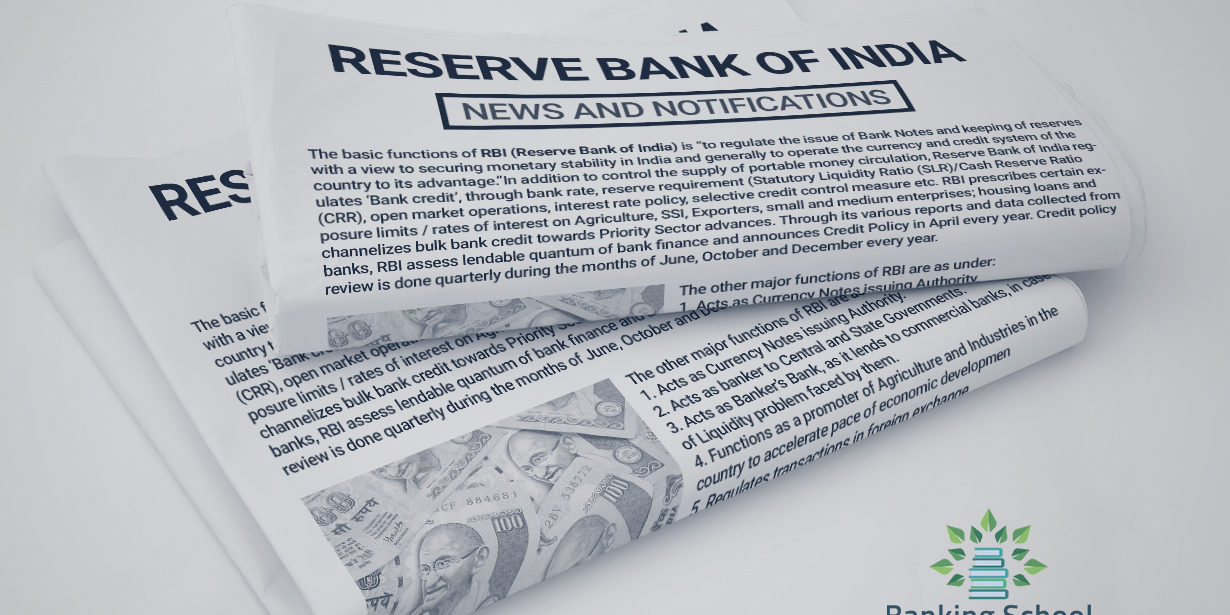Updated on 13.10.2022
Net Demand and Time Liability (NDTL) is basically the sum of demand and time liabilities including ODTL of scheduled commercial banks. NDTL is used by banks for the computation of the Cash Reserve Ratio (CRR), Statutory Liquidity Ratio (SLR), and Liquidity Adjustment Facility (LAF). i.e. Net Demand and Time Liabilities (NDTL) = (Demand Liabilities +Time Liabilities + Other Demand and Time Liabilities + Liability to Others) – Assets with the Banking System.
Assets with the banking system include balances with banks in current accounts, balances with banks and notified financial institutions in other accounts, funds made available to the banking system by way of loans or deposits repayable at call or short notice of a fortnight or less, and loans other than money at call and short notice made available to the Banking System. Any other amounts due from the banking system which cannot be classified under any of the above items are also to be taken as assets with the banking system.
RBI in its circular dated October 13, 2022, notified that the amounts received by a bank from the National Credit Guarantee Trustee Company Ltd (NCGTC) towards claims in respect of guarantees invoked and held by them pending adjustment of the same towards the relative advances, need not be treated as outside liabilities for the purpose of computation of NDTL for CRR and SLR.
Liabilities of a bank may be in the form of demand or time deposits or borrowings or other miscellaneous items of liabilities. As per Section 42 of the RBI Act, 1934, liabilities of a bank may be towards the banking system or towards others in the form of demand and time deposits or borrowings or other miscellaneous items of liabilities.
The liabilities which banks have to pay on demand are known as demand liabilities. Demand Liabilities comprise all liabilities which are payable on demand that include current deposits, demand liabilities portion of savings bank deposits, margins held against letters of credit/guarantees, balances in overdue fixed deposits, cash certificates and cumulative/recurring deposits, outstanding Telegraphic Transfers (TTs), Mail Transfer (MTs), Demand Drafts (DDs), unclaimed deposits, credit balances in the Cash Credit account and deposits held as security for advances which are payable on demand. Money at Call and Short Notice from outside the Banking System should be shown against liability to others.
Time Liabilities are those which are payable otherwise than on-demand. It comprises fixed deposits, cash certificates, cumulative and recurring deposits, time liabilities portion of savings bank deposits, staff security deposits, margin held against letters of credit, if not payable on demand, deposits held as securities for advances that are not payable on demand, and Gold deposits.
Other Demands and Time Liabilities include all those miscellaneous liabilities which are not covered under demand liabilities and time liabilities. Other Demand and Time Liabilities (ODTL) comprise interest accrued on deposits, bills payable, unpaid dividends, suspense account balances representing amounts due to other banks or the public, net credit balances in-branch adjustment account, any amounts due to the “Banking System” which are not in the nature of deposits or borrowing. Participation Certificates issued to other banks, the balances outstanding in the blocked account pertaining to segregated outstanding credit entries for more than 5 years in inter-branch adjustment account, the margin money on bills purchased/discounted, and gold borrowed by banks from abroad, also should be included in ODTL. Loans/borrowings from abroad by banks in India will be considered ‘liabilities to others and will be subject to reserve requirements. Upper Tier II instruments raised and maintained abroad shall be reckoned as liability for the computation of DTL for the purpose of reserve requirements.
Commercial banks in India are mandatorily required to maintain both CRR and SLR at a rate fixed by RBI from time to time having regard to the need of securing monetary stability in the country. Under CRR, a certain percentage of total bank deposits have to be kept in a current account with the RBI. The money so maintained by the banks in the current account of the central bank is to meet defined payment obligations of the banks which cannot be used for any other purposes.
Liabilities not considered for cash reserve requirements:
Balance sheet items of a bank like a share capital, reserve, the credit balance in P&L account, refinance availed from financial institutions, excess provision made on tax payable, unadjusted amount of claim received from DICGC/ECGC/insurance companies, the amount received from court receivers, inter-bank term deposits/liabilities of above 15 days maturity and up to one year and the liabilities arising on account of utilization of limits under Banker’s Acceptance Facility (BAF) are not considered as part of liabilities for the purpose of cash reserve requirements.
Further, Scheduled Commercial Banks are exempted from maintaining CRR on the following liabilities;
- Liabilities to the banking system in India as computed under Clause (d) of the Explanation to Section 42(1) of the RBI Act, 1934.
- Credit balances in ACU (US$) Accounts.
- Transactions in Collateralized Borrowing and Lending Obligation (CBLO) with Clearing Corporation of India Ltd. (CCIL).
- Demand and Time Liabilities in respect of their Offshore Banking Units (OBUs).
The Reserve Bank of India has mandated every bank to have to invest a certain proportion of deposits in certain specified securities, which are predominantly securities issued by the central government and state governments. The specific proportion of deposits in the form of liquid assets, excluding the cash reserve ratio is called the Statutory Liquidity Ratio (SLR). The value of such assets of a Scheduled Commercial Bank shall not be less than the such percentage, not exceeding 40 per cent of its total demand and time liabilities in India as on the last Friday of the second preceding fortnight as specified by the Reserve Bank from time to time.




Asset with banking system. Does the bank system includes RBI too?
No. it does not include RBI assets